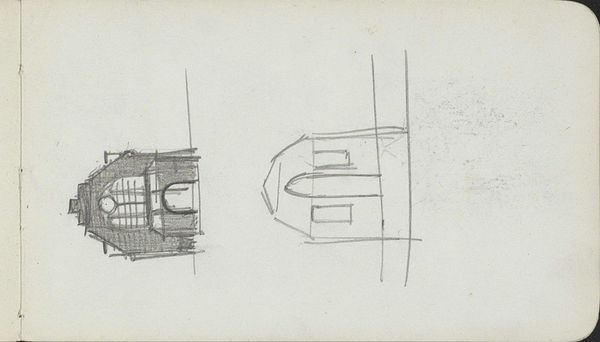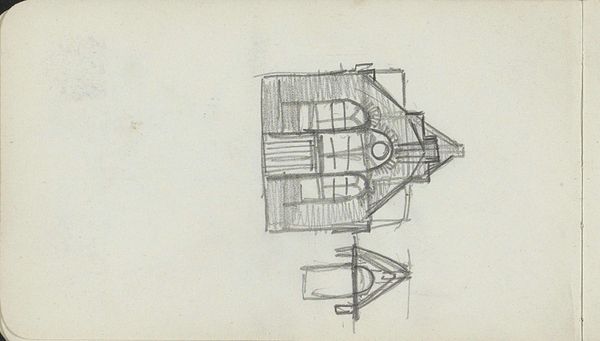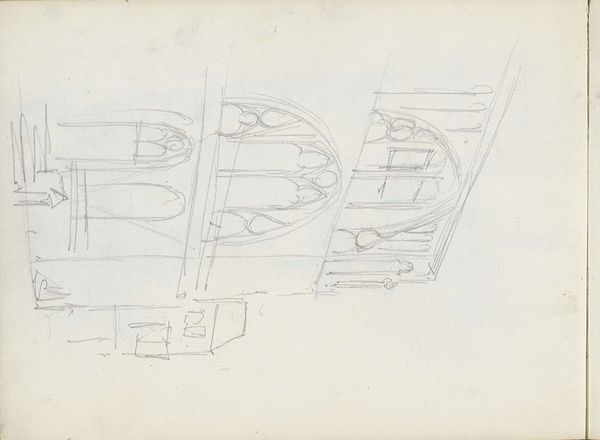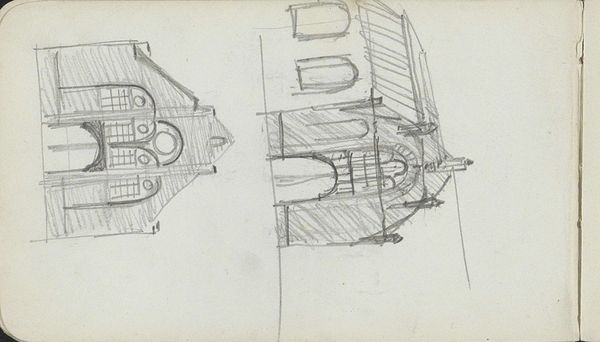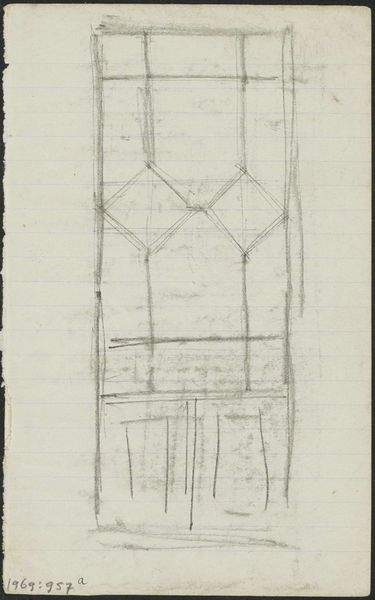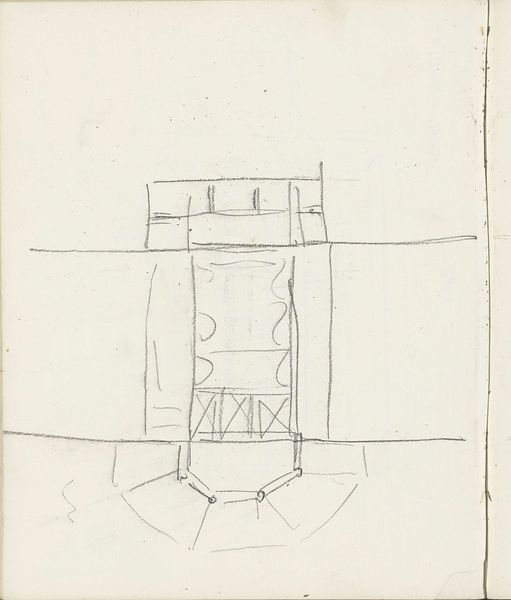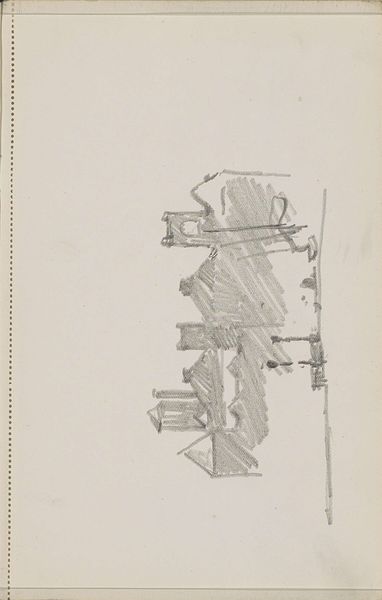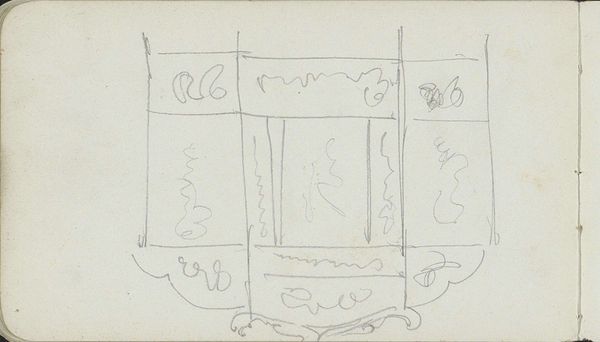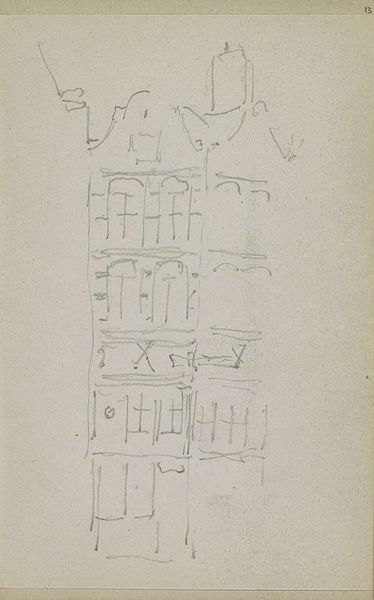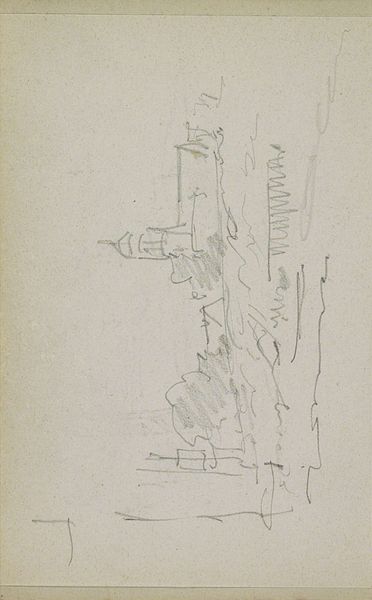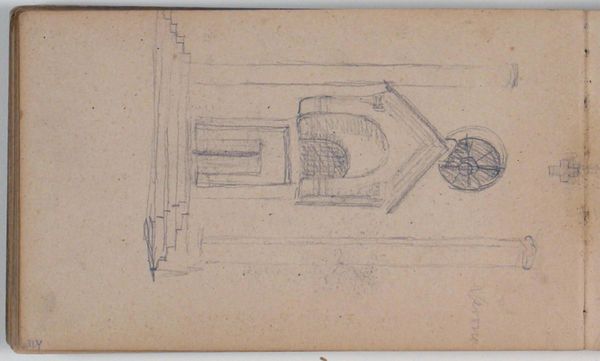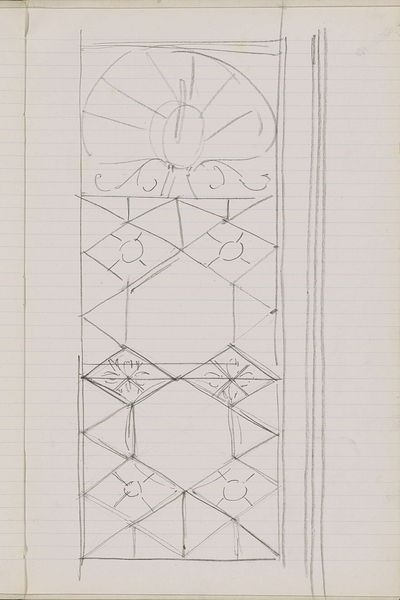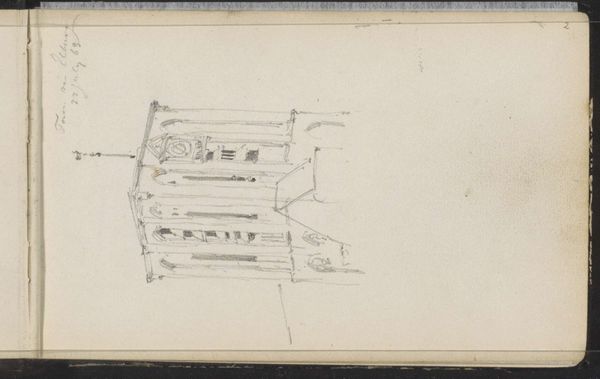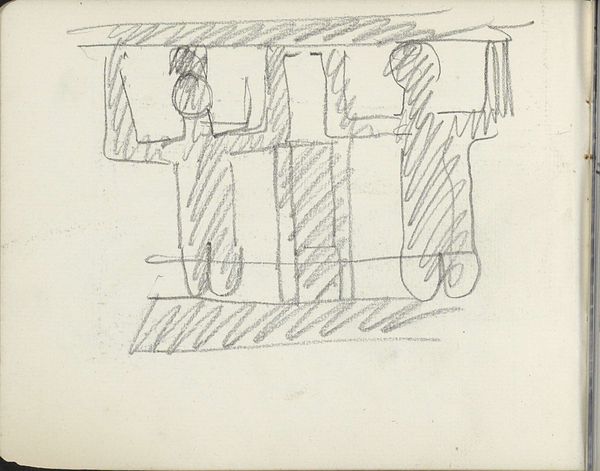
Copyright: Rijks Museum: Open Domain
Curator: Before us, we see "Drie vooraanzichten van kerken," or "Three Front Views of Churches," created by Carel Adolph Lion Cachet between 1905 and 1906. It's currently housed right here at the Rijksmuseum. What strikes you first about this work? Editor: Immediately, I notice the fragility. It feels so ephemeral, sketched almost as a fleeting thought. I am interested by the sketch's stark simplicity and how that interacts with its geometric qualities. There's a deliberate rawness to its incompleteness. Curator: Yes, it’s more about capturing an impression than rendering architectural precision, wouldn’t you say? Cachet seems more interested in the act of seeing, of documenting his immediate experience. Considering Cachet’s broader body of work and his position in the Dutch artistic landscape at the turn of the century, the sketch takes on particular relevance as an almost defiant stance. Editor: Defiant? I am interested in hearing more about that. Defiant against what, exactly? Curator: Well, think about the context: The art world was embracing bolder movements—the Fauves were using vibrant color, the Expressionists were pushing emotional intensity, and even in the Netherlands, artists were experimenting with new styles. Cachet's return to sketching churches seems almost purposefully old-fashioned, perhaps subtly critiquing these artistic movements and a clinging to traditional Dutch subject matter. Editor: Interesting to view it through that lens, though perhaps he was capturing something deeper about his relationship to community through his renderings of spaces designed to serve congregations? Was there perhaps a conversation being started by his work on Dutch identity, where he sought to re-emphasize its cultural traditions? And considering how these places were designed to center faith, perhaps he also meant to imply ideas about faith itself? Curator: A completely valid interpretation, seeing faith reflected in the work. Though I suspect, for Cachet, it might have been a visual meditation on form and space. And he was making social statements on the turn of the century through the style he embraced, just as he was perhaps also documenting elements of faith as they relate to community, in his role as an artist. But I like how you bring that interpretation. Editor: And I your historicism, finding ourselves at an interesting cross-section of faith, tradition, style, and their sociopolitical influences. It feels like these pencil lines contain multitudes, then, and there's much more that can be inferred. Curator: Indeed, there's more than meets the eye here, even within this seemingly modest sketch.
Comments
No comments
Be the first to comment and join the conversation on the ultimate creative platform.
